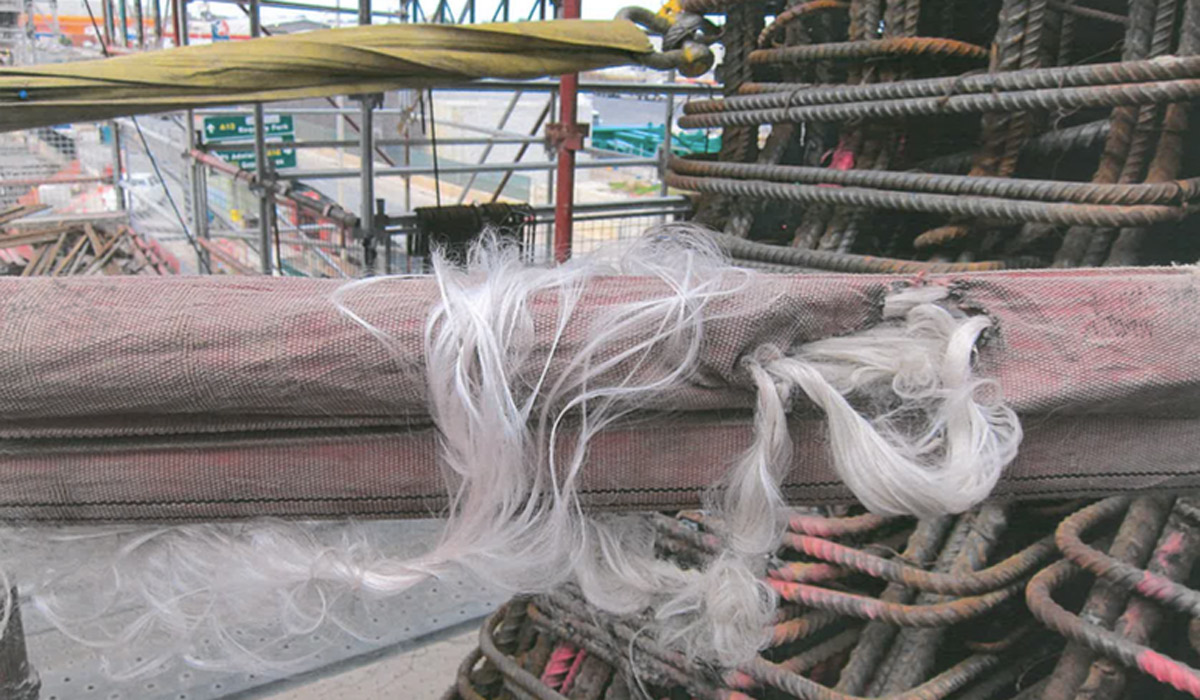Concerns over “shortcuts” on Superway construction
Allegations of questionable construction practises have been made about the most expensive roads project in the history of South Australia, an InDaily investigation has revealed.

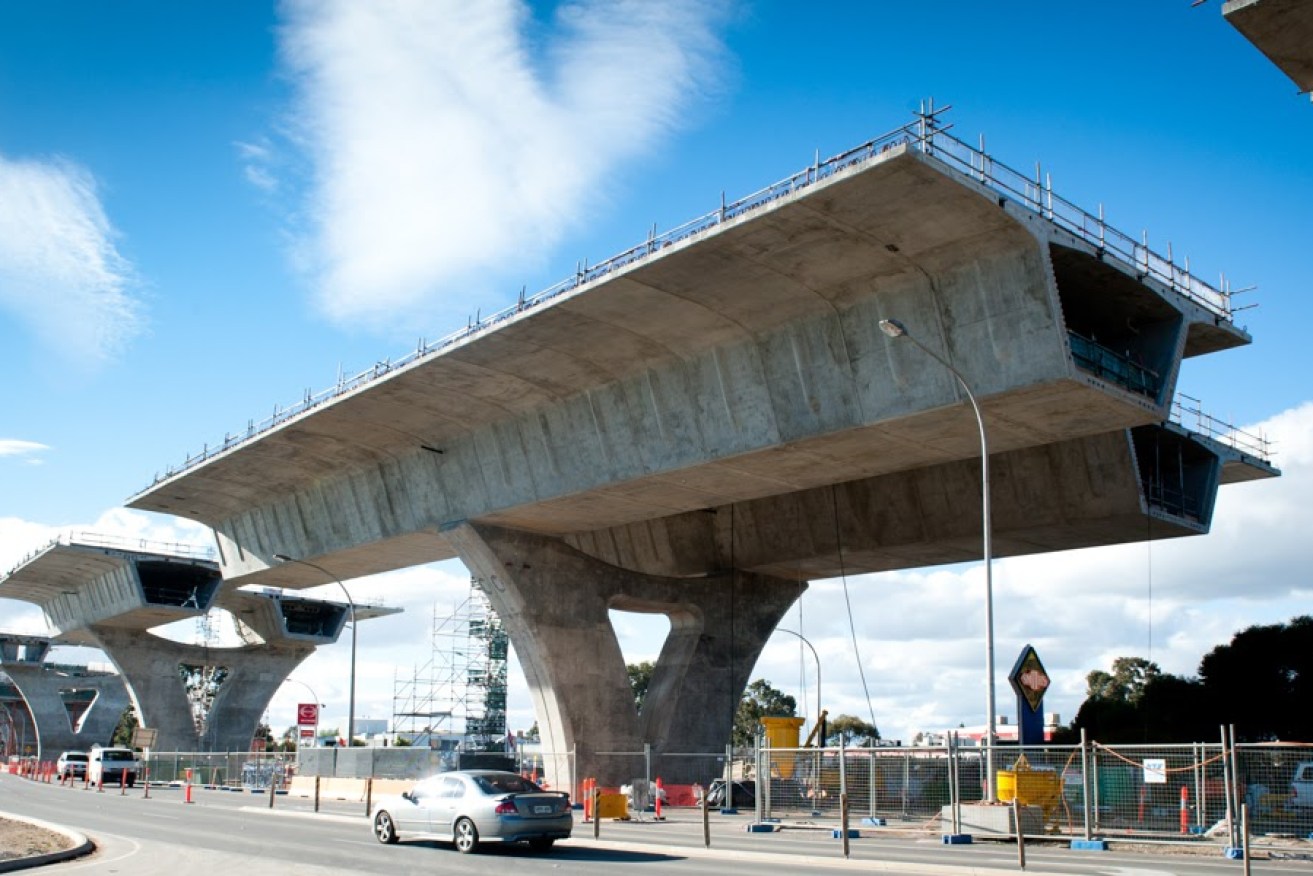
The Superway under construction. Photo: Nat Rogers/InDaily.
Hundreds of shear ties, designed to prevent the $842 million South Road Superway from collapsing during an earthquake, were not installed intact in at least four of the Y-shaped concrete piers holding it above the ground, steel fixers who worked on the project have told InDaily.
Tonnes of steel reinforcement, later installed within the structure, was bent, using oxy-acetylene torches, at temperatures higher than the point at which steel bars can become structurally compromised, they say.
Photographs taken covertly by workers during the build appear to show hundreds of steel reinforcement bars – including bars with chunks of metal melted away – packed tightly together.
Experts have told InDaily steel reinforcement with little space for concrete to pass through can risk weather-related degradation of the concrete, known as “concrete cancer”. However InDaily has also been told some specialised concretes are able to get in between tightly packed reinforcement and avoid the problem.
The photographs also appear to show masses of debris on surfaces where, the workers say, concrete was meant to be poured cleanly to achieve a “clean cold joint”.
The State Government, which oversaw the project, insists the Superway was built “to the highest construction standards” but refused to address specific questions about the construction methods used on the project.
“The South Road Superway has been built to the highest construction standards and it is structurally sound and 100 per cent safe for people to drive on,” a State Government spokesperson said in a statement.
“As with all major infrastructure builds, strict procedures were followed to ensure the structural integrity of the Superway.
“Any modification to the reinforcement was approved.
“Every stage of the construction was subjected to an independent review, and was found to be completely safe.”
A Professor of Civil Engineering approached by InDaily says that, even if the workers’ claims were correct, the structure may still be sound but some of the construction methods should be investigated.
Photographs supplied to InDaily also appear to show a frayed soft sling, holding tonnes of steel together.
Soft slings were all but black-listed in the South Australian construction industry after the death of a worker during the construction of the state’s desalination plant in 2010.
Construction worker Brett Fritsch, 35, died when a 1.8-tonne steel beam fell onto him while being moved in a soft sling.
The State Government also did not respond to questions from InDaily about the use of soft slings on the site.
InDaily presented the workers’ allegations about compromised steel within the structure, and poor safety standards on site, to the contractor that supervised work on the piers – national construction and engineering giant John Holland.
The company declined to make any comment.
Dominick Lewis, an experienced steel fixer who worked on several of the piers that elevate more than two kilometres of the roadway, has decided to risk his future in the construction industry by blowing the whistle on the project.
Other former workers who spoke to InDaily would not be named in this story, fearing legal and professional consequences.
Lewis told InDaily that many steel reinforcement bars had to be heated far beyond the recommended temperature during heat bending on-site.
Steel reinforcement bars can lose half of their strength when heated beyond 450 degrees centigrade.
Lewis said he was given a ‘heat pen’ to test the temperature of the bars. The markings made by the heat pens on the metal melt and change colour when the bar is heated to between 400 and 450 degrees centigrade.
But Lewis said the bars were arranged in a way that made it impossible to gain the leverage to bend them without heating them above structurally safe temperatures.
Lewis said the bars would instead be heated until they were “cherry red” and could be pushed over “with your finger”.
“We would bend some of the bars three or four times to make [them] fit,” he said.
“We just heated the bars … till they were red hot, and we could bend them out of the way to get the other bars through,” he said.
Another steel fixer, John*, told InDaily: “We were meant to use a heat pen and no more than 400 degrees”.
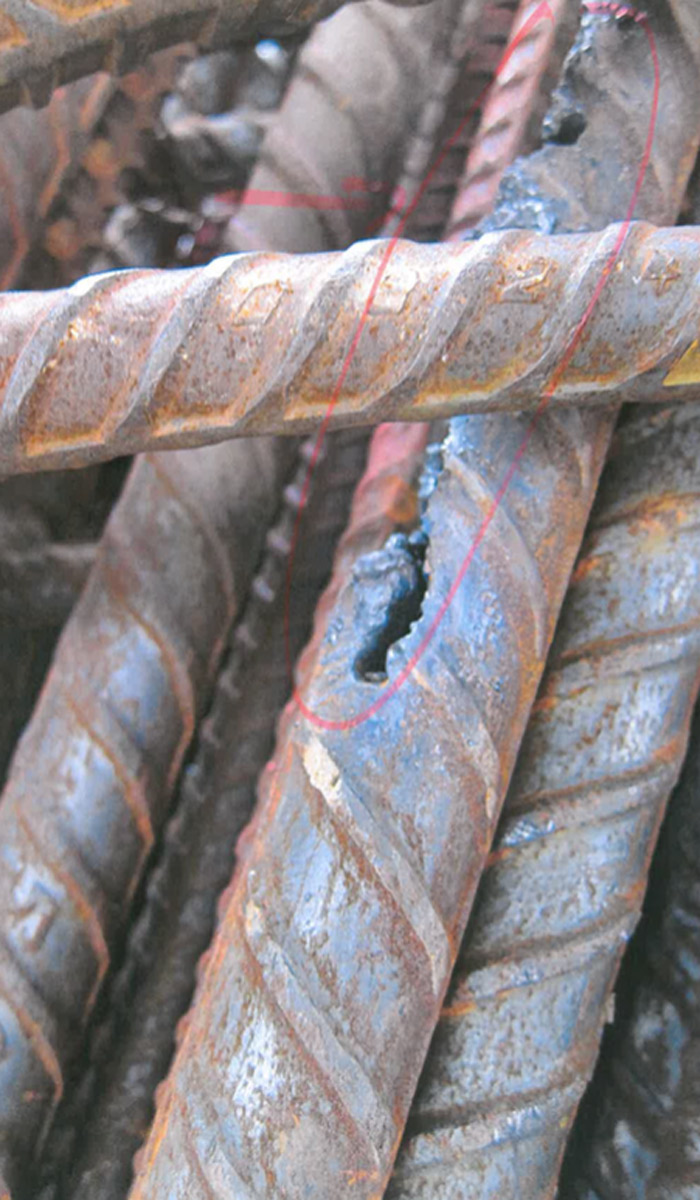
This photograph, marked with highlighter pen, shows steel reinforcement heated using oxy-acetylene torches, former Superway workers say.
However, “it’s got to be red hot before it bends unless you’ve got some sort of machine to do it,” he said.
“If you had more space you’d be able to do it with the leverage, but when you’ve got a metre by a metre to work in, you cannot bend a bar.
“What they did was that at every pre-start meeting, they would re-address the issue, saying you have to use the heat pen, it cannot be heated over 400 degrees, blah blah blah.
“So that if anything does happen, it falls back on the workers.”
John said the bars were also bent repeatedly, sometimes at wider-than recommended angles.
“They weren’t meant to be bent more than 25 degrees and I think some of them we had at ninety degrees and back up to 90 degrees,” he said.
He said he was “under instruction to bend them to that degree”.
“I said there was no way you could do it but to bend it [like that],” he said.
Another steel fixer who worked on the build, Rob*, told InDaily that the reinforcement bars that arrived on site “weren’t bent to the right shape from the steel manufacturer”.
However, “instead of sending the bars back to the manufacturer and getting them bent to the right shape they just got us to get oxy-acetylene and heat the bars”.
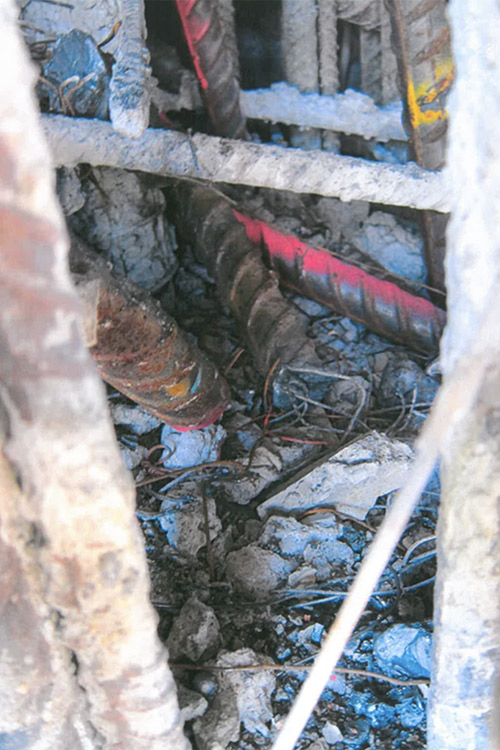
Former Superway workers claim concrete was poured onto the debris that appears to be shown in this photograph.
“About 300 millimetres worth of the bar would be heated till it’s glowing red and malleable and you could just bend it like butter
“But you’re not actually supposed to do that because it takes the structural integrity out of the bar.
“So almost every bar in the pier wall we’d actually have to heat and bend into the right shape.”
Rob said he worked on “five or six” of the piers.
All three men said they were uncomfortable with the heating and bending methods they fear could have fundamentally weakened the reinforcement bars.
Lewis and John said they gave warnings that they would have to heat the bars beyond temperature that risked the bars’ structural integrity.
Lewis said he had expressed his concerns to Bears Concreting and to John Holland on his section of the site.
Each of them, said Lewis, told him he must use the heat pens.
“We said we’d never seen bars bent like this before and John Holland said you’ve got to use your pens,” Lewis told InDaily.
“We said ‘we cant because we can’t reach in there to even get to some of these bars’.
“We showed them; we said, ‘how do you bend these bars?
“We were just told ‘just do it’
“So we did it the best way we could.
“We tried to do our jobs properly.
“[But] when you are trying to bend an inch-thick bar, and it won’t move, you have to heat it hotter. It’s just the way it is.
“You have to heat it until it will bend.
“You can’t refuse to do your job or you’re going to get fired.”
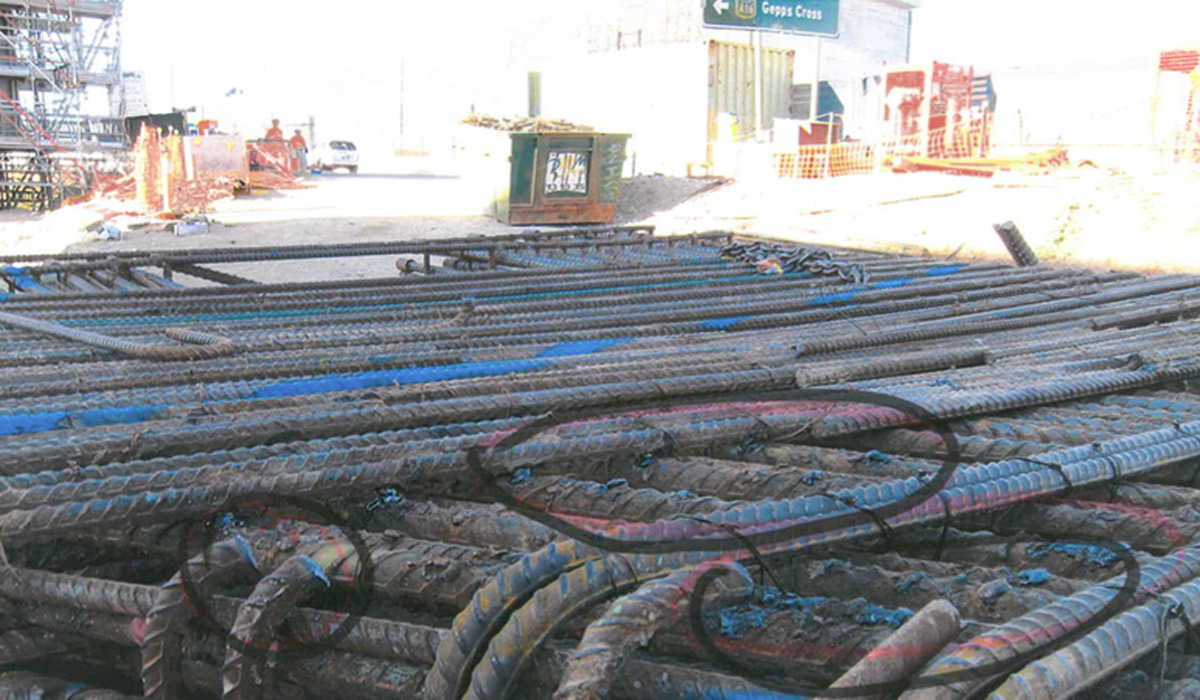
This photograph, marked with a black marker and highlighter pen, shows what former Superway workers say is steel reinforcement bars cut with oxy-acetylene torches on site.
He said there was little training in the proper use of the oxy-acetylene torches to heat-bend the bars.
“None of us were trained how to bend these bars, we were just doing it, because it was the job.
“You only complain a few times, if nothing’s done about it and people know what’s going on.
“Everyone knew what was going on but nothing was done about it.
“So you just go on and you get on and do it.”
Lewis said that others on the site “saw what we were doing”.
“They didn’t like it, but they didn’t stop us, because it was the only way to do it,” he said.
“In the end, no one was using pens. No-one was marking them (the steel bars).”
Shown the photographs the workers say were taken on the site, structural engineer and University of Adelaide Professor Dr Michael Griffith told InDaily that it was possible that there was enough redundancy in the structure to compensate for steel reinforcement and shear ties workers claim had been compromised.
“There may be some perfect engineering explanation,” he said.
“But I would like to hear more to reassure me that there isn’t a problem.”
“The way those bars are clumped together, to me, seems pretty unusual.
“It certainly is worth asking the question.”
He said that “calculations and evidence to justify [the structure’s] strength is adequate” should have been produced by the companies involved.
He noted the “general slop and untidiness” of the steel work in the photographs and questioned how concrete would be able to get between the tightly packed bars.
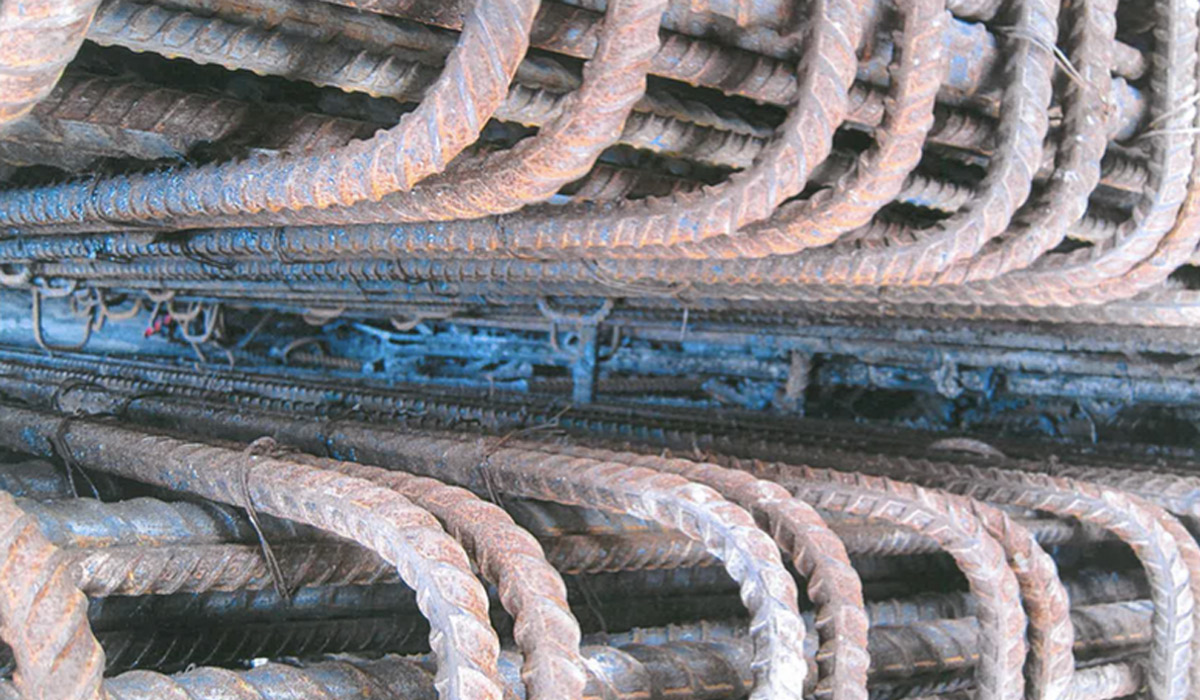
Experts have questioned how concrete would effectively pass through “tightly packed” steel reinforcement. Workers say this photograph was taken on the Superway site.
He said the allegedly incorrect installation of shear ties in the structure also needed to be addressed by the companies involved, but said: “it’s going to take a pretty sizeable earthquake to produce enough force … to buckle all of those bars”.
Emphasising that he was not privy to the designs of the Y-shaped piers and was not involved in the project, he told InDaily that “if this is … a case of a company taking a bunch of shortcuts, then that should come out”.
Griffith also emphasised that his engineering expertise was more closely tied to masonry structures than concrete ones. InDaily contacted several structural engineers with specialist expertise in large concrete structures from Adelaide University, the University of New South Wales and Melbourne University, each of whom indicated they were too busy to comment in detail.
The Superway is the state’s first elevated roadway, and part of the vital north-south corridor that links industry with air, sea, rail and freight transport networks across metropolitan Adelaide. It was jointly funded by Federal Government and the South Australian Government, and overseen by the SA Department of Planning, Transport and Infrastructure.
A spokesperson for the federal Department of Infrastructure and Regional Development told InDaily: “The Australian Government provides funding to projects in partnership with the South Australian Government [whereas] the South Australian Government acts as the design and construction agent, dealing with all operational matters including project design, procurement, delivery and management”.
“The Australian Government expects the South Australian Government to deliver safe, efficient and reliable infrastructure.”
Your accident and incident books are empty, and your rubbish bins are full of bloodied materials.
Another steel fixer, Rob*, told InDaily that he believes the shear ties – known as earthquake-proof hooks or earthquake strengthening bars – may have been compromised before and during their installation in the piers.
Each intact shear tie on the site was composed of one long, metal bar with hooks on each end.
“It’s supposed to [be] a continuous bar,” Rob said.
“They’re supposed to go in through the pier structure and then hook on the bar on each side.
“But they didn’t fit through the bars we were supposed to get them through … because you have bars coming up vertically, and they’re that close together, and you’re supposed to get, say, a 50 millimetre rod inside a 20 millimetre gap and it’s not going to happen.
“We’d have to cut the hook [off one end] and then you’re supposed to have a certain overlap, but we never had the overlap.
“We just sort of stuck them in.
“You take the strength out of it when you cut it [so] they had to interlock with each other and be tied together with a certain amount of the bars overlapping each other.
“But because the gaps were too tight you couldn’t actually get your hands in there to tie them together, so they just ended up being loose in there.
“The bars were never tied together because we could never get our hands in there to actually tie them.
“They’re not doing the same job as they’re designed to do.
“Shortcuts were taken because everyone was under pressure.”
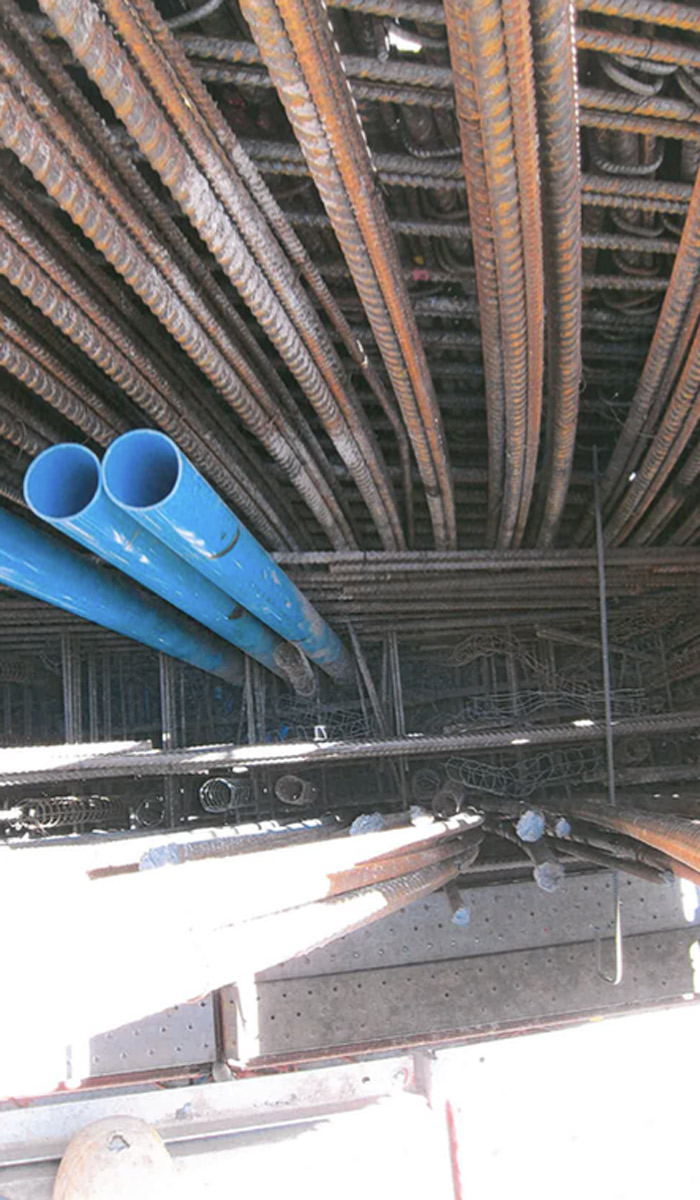
Former Superway workers claim concrete was poured onto the debris that appears to be shown in this photograph (centre).
Urban Superway Joint Venture – which originally comprised John Holland Pty Ltd, Macmahon Contractors Pty Ltd, and Leed Engineering and Construction Pty Ltd – was the contractor commissioned to construct the roadway.
A spokesperson for MacMahon Contractors said the company had “not been involved in this project since 2012 when our interest was sold to John Holland”.
GHD provided the engineering design services. That company declined to comment on this story. Leed Engineering and Construction Pty Ltd did not respond to InDaily‘s request for comment.
“Every 200 millimetres there was supposed to be an earthquake strengthening bar … but it just got to the point where they didn’t fit in the 200 millimetre increments, so we basically just put them in anywhere they could fit,” said Rob.
“It doesn’t really meet the design standard, but it was still signed off.
“It was always passed.”
Rob admitted he felt guilty for the quality of the work he had done on the site.
“We’d try and do the job right and we’d point out the issues, and they would say no, no, no, that’s fine, just do it. So we’d do it.
“I did feel guilty, but there was nothing really that I could do about it.
“You just do what you’re told.”
State Secretary of the Construction, Forestry, Mining and Energy Union (CFMEU) Aaron Cartledge told InDaily the union had heard concerns from workers about the steel reinforcement, but only “after the project was complete, after some workers had moved on”.
“We have seen pictures and heard stories of the reinforcement bars and sheer ties being heated up cut and bent so that they could fit the formwork,” Cartledge said.
Adelaide is Australia’s most earthquake-prone city.
Historical seismological data suggests that Adelaide has about a ten per cent chance of a destructive earthquake every 100 years, and has a similar earthquake hazard rating as Christchurch in New Zealand.
Adelaide’s last major destructive earthquake was a magnitude 5.5 quake in 1954.
I thought I was going to die in there. I thought someone was going to die in there.
Perhaps the most damning photographs appear to show a frayed soft sling, holding what workers say was tonnes worth of steel reinforcement together.
According to a Safework SA Hazard alert: “any defect or damage visible on the sling can reduce the Working Load Limit (WLL) of the sling and potentially be an initiating point for failure”.
“Synthetic slings must not be used unless they are protected from … sharp edges.
“Slings must be checked by a competent person before each use for any visible signs of damage that could affect its safe use.”
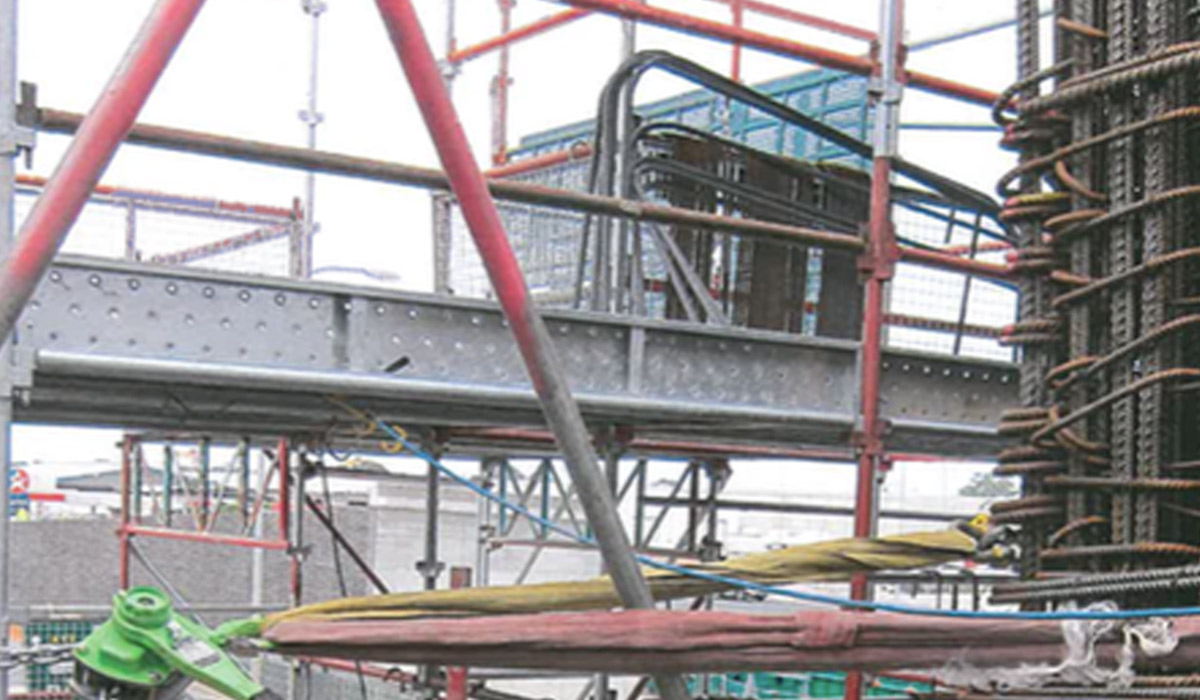
Another photograph former Superway workers say shows an apparently frayed soft sling in use on site.
Lewis told InDaily requests for the sling to be replaced were initially ignored by John Holland.
“We told … them that you’re not allowed to use soft slings and especially ones that are unravelling, and they said ‘would you buy us a new car if you knew we were going to crash it?’
“They said, ‘we’re not going to fix them because you’ll just fuck them again’.”
Lewis said the frayed sling was only replaced once the CMFEU was able to get on site.
Cartledge said “the use of soft sling … when damaged as the photo indicated is extremely dangerous and can lead them snapping without warning trapping or crushing workers in the process”.
“We went to [the] site on many occasions to investigate safety problems and we certainly visited about the use, storage and condition of soft slings.
“The employment of locals was a real issue with large parts of the workforce on visas this made it … very easy to cover up safety [issues] on the project, which were many.”
Both Lewis and John described the approach to safety on the site as unreasonably strict in some instances and too lenient in others.
“It was so over the top in some aspects,” said Lewis.
“People were getting warnings for taking their hard hats off while drinking water.
“And then on the other hand, PVC pipes were falling off piers, bars were falling from inside piers, a guy had his jaw smashed at the pre-cast yard, a crane overturned and a guy’s ankle was broken.
“I thought I was going to die in there. I thought someone was going to die in there.
“At the time I thought it was wrong, and I still think it is wrong.”
John told InDaily he eventually quit the job as a result of what he felt was an inconsistent approach to safety on site.
“Some of the things they asked me to do were impractical,” he said.
“They were expecting me to be too safe – I couldn’t walk on a cage that was one metre above the ground.
However: “they were happy for me to work up the very top of South Road with no safety equipment”.
…a safety officer on the project says the claim is based on ‘creative accounting’.
John said he had suffered severe burns to his left hand during the construction when he grabbed onto a bar that had been heated.
He claims Bears Concreting told him not to report the injury, and asked him to remain on the site overtime bearing welts on his hands and ice in a glove.
“There were welts on my hand. For the rest of the day I had to hold a glove with ice.
“I was still asked to stay back and do overtime.
“I was told not to report it.
“That’s the thing with construction – anything comes back on you.
“Even if they say not to report it, by law you’re still obligated to report it.
“If you don’t report it … it still falls back on you, it doesn’t matter what they say.”
John says he took no time off work as a result of his injury, but kept ice on his burns for two days.
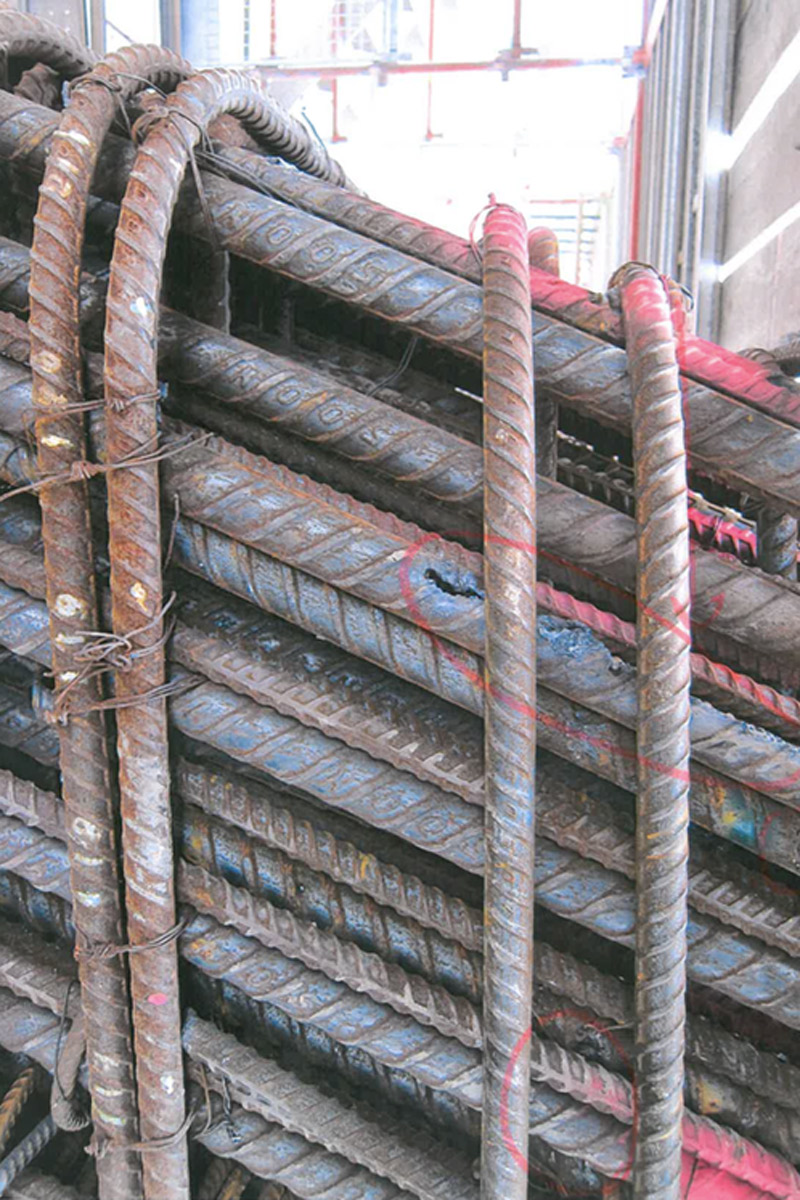
Another photograph, marked with a highlighter pen, which former Superway workers say shows tightly packed steel reinforcement with some damage from oxy-acetylene torches.
InDaily put detailed questions to Bears Concreting regarding the workers’ allegations, but received no response.
John Holland is currently facing prosecution over an incident that allegedly occurred on the Superway site in July 2013.
The incident allegedly involved a portal crane colliding with an elevated work platform. Federal work health and safety regulator Comcare alleges the worker was in the basket of the elevated work platform when the incident occurred, and received medical treatment for his injuries.
InDaily understands John Holland will also face court in February 2016 over an alleged incident in which, Comcare claims, a large concrete pipe fell onto two drivers as they drove under the elevated roadway during the build.
The contractor’s website claims that there were “over 1 million man hours lost time injury-free” on the Superway construction. A ‘lost time injury’ is one that causes a worker to be off the job for a day or more.
However, Michael*, who worked for John Holland as a safety officer on the project says the claim is the result of “creative accounting”.
He told InDaily the company actively opposed the reporting of serious injuries on the site in order to secure the “one million man hours” claim.
“In the event there was an incident or an accident (there) was a little bit of creative accountancy in the reporting methodology,” he said.
“Your accident and incident books are empty, and your rubbish bins are full of bloodied materials.”
Michael told InDaily of a worker who ruptured his cruciate ligament on the job, at a time when the project was approaching its “one million man hours LTI-free” goal.
On the worker’s way to the site, Michael recalled: “he said ‘my leg’s really, really bad, I don’t want to drive in’”.
“I said ‘stay home mate’.
“[However] someone else was grabbed hold of and told to go up there and get him and bring him into work,” the former safety officer said.
“And then you take him home [each day] and he doesn’t qualify as an LTI.
“That gave them the wriggle room so that they could have their one million man hour presentation with no LTI.
“It just wasn’t right.”
In November 2014, two John Holland entities were fined a total of $360,000 after an employee on the Perth City Link Rail Project in 2011 was struck and killed by an out of control hi-rail vehicle manufactured by John Holland Rail Pty Ltd.
In 2013, ComCare filed proceedings against John Holland over two alleged incidents – one of them fatal – on the Brisbane Airport Rail Link project. ComCare alleged that in September 2011, an employee on the project suffered serious head injuries and later died after part of a steel structure struck him in the head.
In April this year the company was fined $110,000 over an incident on the site in which an employee suffered a head injury after an unsecured metal bridge struck him.
In 2012, John Holland was fined $242,000 following the death of a worker in Western Australia. Wayne Moore, then aged 45, died after he stepped onto an unsecured sheet of grid mesh at the Mt Whaleback mine, in the Pilbara, and fell to the floor below.
*InDaily has altered the names of former workers on the site who would only speak on condition of anonymity.
